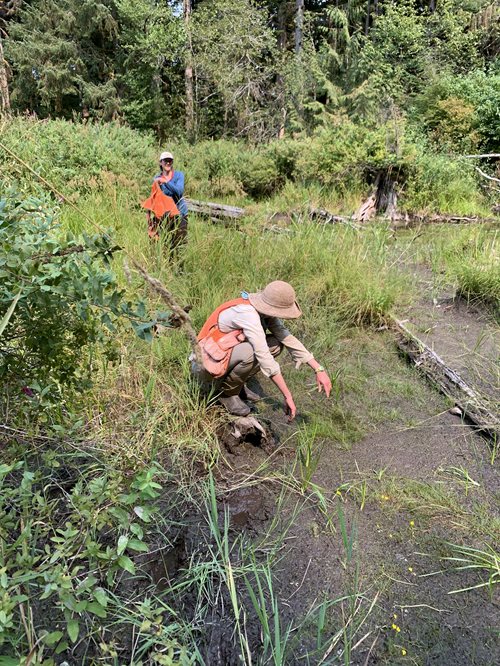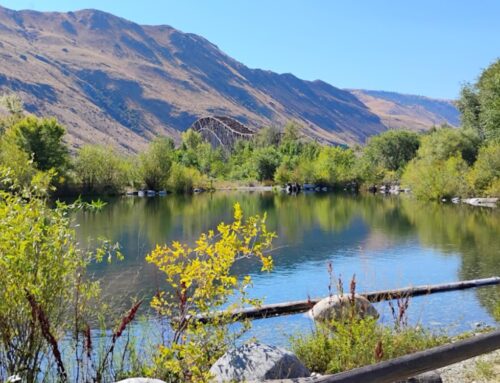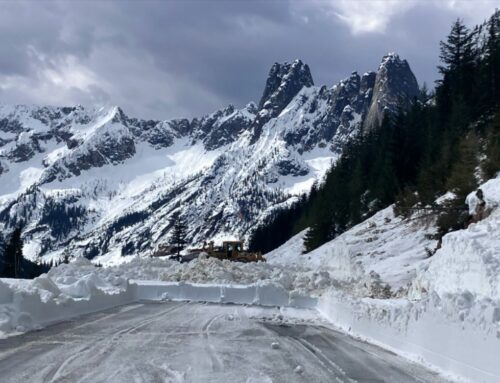Ecology upholds protections of Washington’s wetlands amid ‘WOTUS’ disputes
information released by DOE; photos courtesy of Tynan Ramm-Granberg
May is American Wetlands Month, and the Department of Ecology is applauding these “kidneys of the earth” for the role they play in the state’s climate strategy.
A brief history of American Wetlands Month: The EPA, along with its federal, state, Tribal, local, nonprofit and private sector partners, created American Wetlands Month in 1991 to celebrate the vital importance of wetlands to the nation’s ecological, economic, and social health; and to educate Americans about the value of wetlands as a natural resource.
Climate change is causing fluctuations in temperature and changes in the timing and amount of precipitation across all ecosystems, and this can have an especially profound effect on wetlands. Coastal wetlands are being affected by sea level rise and changes in water chemistry. These variations can alter wetland conditions and processes, including the types of habitats they provide and their ability to help manage water quality and flooding.
Managing climate change
Many wetlands play a role in our ability to manage risks from climate change. Wetlands are dynamic systems that experience cycles of wet and dry phases on seasonal, annual, and decadal scales. Because of that natural variability, wetlands may be able to persist and continue to provide ecosystem services despite climate change. These services include:
- Cleaning up polluted water
- Slowing and storing floodwaters and snow melt
- Recharging groundwater
- Supporting habitat for different native and culturally significant plant and animal species
Wetlands are key players in global greenhouse gas mitigation plans. While they can be a source of methane and carbon dioxide, they’re also important sinks for these greenhouse gases, where more carbon is stored in the plants — and especially the soil — than is released into the atmosphere.
Methane is much stronger than carbon dioxide in its ability to trap heat. But its lifetime in the atmosphere is shorter because it basically breaks down over time, according to USGS. Carbon dioxide, on the other hand, is more stubborn. It doesn’t break apart like methane, so carbon dioxide can stay in the air forever.
Today, half the methane in the atmosphere comes from people while the remaining half is from natural sources like swamps, bogs, marshes, and wetlands, which are part of the earth’s existing carbon cycle. In these aquatic places, tiny microbes feed on organic material, producing methane as a waste product. How much methane they produce depends on many factors, including hydrology, temperature, vegetation, and wetland size.
The conditions in wetlands that lead to methane production are also good at removing and storing carbon dioxide from the atmosphere. The “how” is a complex interaction between living things and chemical processes, but ultimately, carbon dioxide is taken from the air via photosynthesis, turned into living plants that die, decompose, and form organic soils. These soils take a very long time to develop so the older a wetland, the more carbon it stores.
Balancing these greenhouse gases is an important part of our climate change mitigation process. We must work to limit the disturbances to wetlands and help support and restore the processes that allow wetlands to store more carbon than they release.
Prevention
The biggest role we at Ecology play is preventing wetland disturbances from happening before they can become an issue. We collaborate with local stakeholders, contractors, Tribes, and other government agencies to avoid and minimize impacts from development. In Washington, we require applicants to show that they’ve followed a mitigation sequence and worked first to avoid and minimize impacts to wetlands wherever practicable.

Mitigation sequencing includes:
- Avoiding the impact altogether by not taking a certain action or parts of an action
- Minimizing impacts by limiting the degree or size of the action and its implementation by using the right technology, or by taking positive steps to avoid or reduce impacts
- Rectifying the impact by repairing, rehabilitating, or restoring the affected environment
- Reducing or eliminating the impact over time through preservation and maintenance operations during the life of the action
- Compensating for the impact by replacing, enhancing, or providing substitute resources or environments
- Monitoring the impact and taking corrective measures
We also collaborate with individuals and groups to restore disturbed wetlands as best we can to their original state. Restoring wetlands to their original hydrology is often difficult, but doing so provides an effective way to facilitate carbon storage, allow natural revegetation to occur, support a diversity of life, including threatened and endangered species, provide flood and erosion control, and promote water filtration.
Wetlands & WOTUS
You may have heard in recent news about “Waters of the United States” (WOTUS) and the on-again off-again struggle over this rule in several states. For some background, the 1972 amendments to the Clean Water Act established federal jurisdiction over “navigable waters,” defined in the act as the “waters of the United States.” Many Clean Water Act programs apply only to “waters of the United States.” The Clean Water Act provides authority for the Environmental Protection Agency (EPA) and the U.S. Department of the Army to define “waters of the United States” in regulations.
Timeline of recent WOTUS-related events
- Dec. 30, 2022: The EPA and the U.S. Department of the Army announce the final “Revised Definition of ‘Waters of the United States’ rule.”
- Jan. 18, 2023: The rule publishes in the Federal Register.
- March 19, 2023: A Southern District of Texas judge issues a preliminary injunction stopping the 2023 WOTUS rule from going into effect in Idaho and Texas.
- March 20, 2023: The rule becomes effective in all states except Idaho and Texas.
- April 12, 2023: A district judge in North Dakota halts the rule from taking effect in 24 states pending the outcome of a lawsuit against the Biden administration.
The federal rulings don’t change Washington state’s laws or regulatory authority to protect wetlands. In Washington, the state law covers all “waters of the state.” We have the authority to regulate wetlands under the State Water Pollution Control Act and the Shoreline Management Act. We use the State Environmental Policy Act (SEPA) process to identify potential wetland-related concerns early in the environmental review and permitting process. We also have authority to review and approve projects under Section 401 of the federal Clean Water Act, and we generate tools and guidance for local jurisdictions to protect wetlands as critical areas.
We continue to regulate non-WOTUS wetlands and apply the water quality standards prescribed by state law. Any project involving filling or otherwise altering a wetland — even if the wetland is deemed non-WOTUS — needs to follow state regulations.
You can find more information on our Wetland Regulations webpage.









